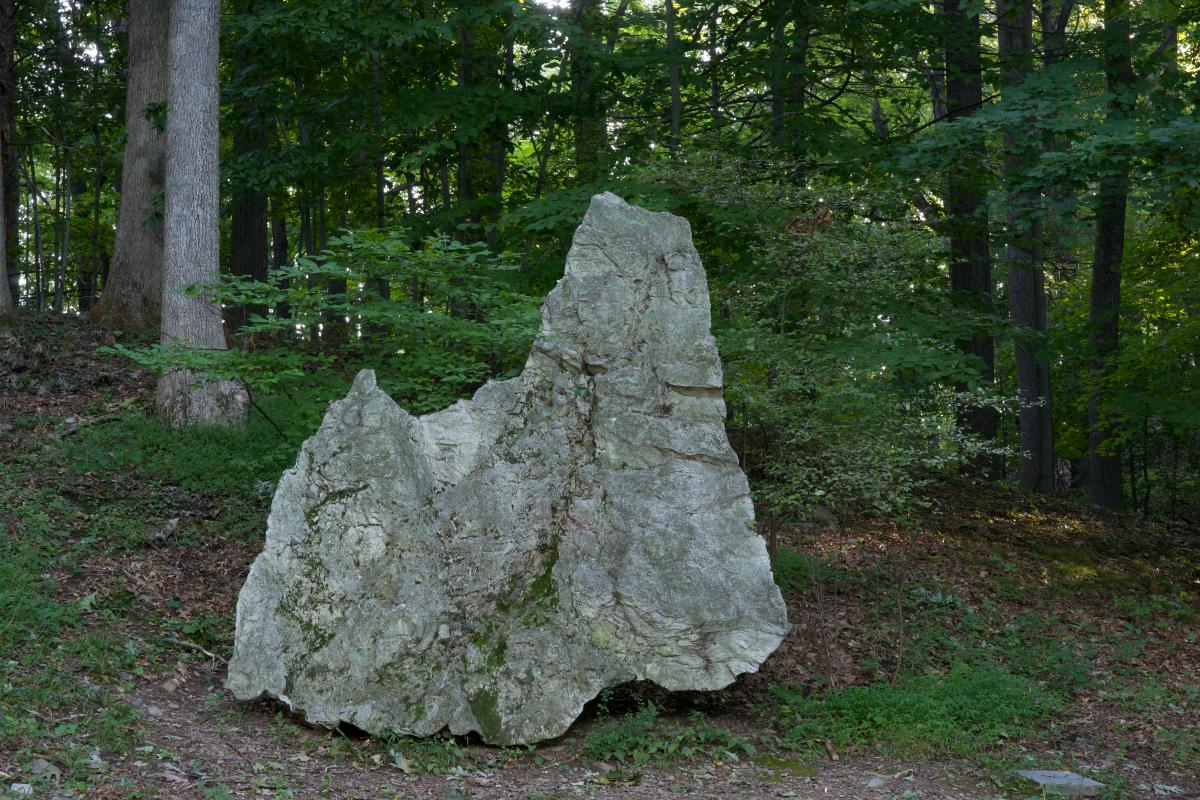On view
American, 1917-2022
Catskill, 1968
Polyester, fiberglass, and rock aggregate
15 ft. 8 in. x 12 ft. x 24 in. (477.5 x 365.8 x 61 cm)
Gift of the Ralph E. Ogden Foundation
Photo by Jerry L. Thompson
Manuel Bromberg attracted early attention in 1939 when he won a commission for a Works Progress Administration post office mural, the design for which appeared in LIFE magazine. Four years later, the U.S. War Department sent Bromberg abroad to document World War II through sketches, photographs, and paintings. He abandoned figurative painting after the war and adopted a hard-edge abstract style. During the 1950s Bromberg was closely associated with the architect and theorist Buckminster Fuller and his early explorations of geodesic domes. He also began experimenting with painting and cutting plaster for mural work. Bromberg’s 1963 Teaneck Mural, a nine-hundred-square-foot mural in Teaneck, New Jersey, was composed of ten thousand pounds of cement, which was applied by union plasterers.
Bromberg became a professor at the State University of New York at New Paltz in 1961 and a few years later received a grant from the university to cast a twenty-two-foot-high cliff made of polyester and fiberglass in the Catskill Mountains. Bromberg presented one fifteen-foot section of the cliff to the college in memory of Martin Luther King, Jr.; Storm King acquired the second section, titled Catskill, in 1968. Catskill demonstrates an early concern for environmental issues while also reflecting the ethos of nineteenth-century Romantic painting, a heritage with deep roots in the Hudson River region.
Bromberg became a professor at the State University of New York at New Paltz in 1961 and a few years later received a grant from the university to cast a twenty-two-foot-high cliff made of polyester and fiberglass in the Catskill Mountains. Bromberg presented one fifteen-foot section of the cliff to the college in memory of Martin Luther King, Jr.; Storm King acquired the second section, titled Catskill, in 1968. Catskill demonstrates an early concern for environmental issues while also reflecting the ethos of nineteenth-century Romantic painting, a heritage with deep roots in the Hudson River region.

